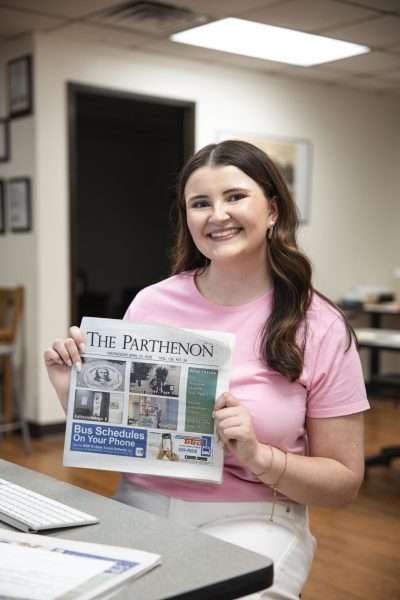Midsommar Review
“Midsommar” follows a young American couple (Dani and Christian), on the verge of breakup. After a horrific event prolongs their relationship, the couple travels to Sweden with their friends. Basically, these Americans want to experience the lifestyle of a Swedish cult, the Harga. Once there, the group becomes accustomed to the Harga’s ways. At first, the tribe appears to be harmless. But as the days go on, people start disappearing. Dani and Christian begin to realize that the Harga tribe has horrific goals.
Ari Aster, the director (known for 2018’s “Hereditary”), is a technical master, capable of thrusting us into fictional environments with ease. With this film, there is a clear feeling of cinematic immersiveness. Often times, the duration of camera shots is extremely lengthy. Aster wants us to view this folky atmosphere through uninterrupted viewpoints. When characters have detailed discussions, Aster utilizes long, continuous takes, designed to put us in the perspective of a bystander.
These patient shots help build the fictional setting into a lifelike environment, full of narrative fluidity, established geography, and connected lore. In turn, we receive a mysteriously intriguing world, brimming with contradiction. Constantly, we are cinematically overwhelmed by the community’s complicated nature. On one hand, it’s a gleaming world, consisting of cohesion, happiness, and natural beauty. On the other hand, it’s a frightening, foreign world, complete with hints and secrets.
Credit must be given to Pawel Pogorzelski, the director of photography. In “Hereditary,” Pogorzelski and Aster created a beautiful horror film, shrouded in darkness. The end result was one of the most beautiful horror films of recent memory. Here, Pogorzelski is working in a sun-filled environment. No matter the time of day, Pogorzelski showcases his visual expertise. His visuals transform the film into a colorfully vibrant nightmare.
Henrik Svensson, the production designer, constructs a layered world, destined for cinematic analysis. Like “Hereditary,” there are a lot of visual aspects that will go unnoticed. Svensson, a Swedish artist, brings an abundance of detail to this village. On repeat viewings, his meticulous methods will reward viewers who seek further answers/details. To go along with the exceptional visuals, Bobby Krlic (the musical composer) creates a frightening score that gives the imagery a powerful yet horrific life force. Krlic’s score embraces folky elements, and taps into our fears of the unknown.
Again, Aster has shown us that he can get the best out of his performers. As Dani, Florence Pugh turns in a flawless performance. Dani is dealing with an unthinkable amount of trauma, so clearly, Pugh has a ton of dramatic responsibilities. Overall, Pugh is insanely charming and shapes Dani into a lovable figure. When Pugh showcases her character’s sadness, the film becomes unmistakably harrowing. When Pugh goes to even darker places, her piercing screams jolt our souls. Consequently, we receive a layered female character, worthy of our condolences.
As Christian, Jack Reynor convincingly portrays a distant, egotistical male. Reynor has just the right amount of vulnerability, making us care for him. But overall, Reynor understands that his character is made up of apathetic qualities. Reynor’s voice lacks pure emotion. His body language points to an untrustworthy source of relations. And that’s the point: Aster wants Christian to be a clear representation of faulty masculinity.
It takes awhile for the film to delve into its violent customs. But rest assured…when the blood hits, it really sticks. It’s the type of violence that hits us in our most vulnerable spots. From top to bottom, Aster shows us vicious imagery, made up of bodily agony. These scenes are elevated by Aster’s forbearance. The slow pace allows us to witness the deceitful nature of specific beings. In turn, we are reminded that sometimes, evil comes from a seemingly pleasant tribe of individuals. Who can we trust? Can we trust anyone?
Obviously, “Midsommar” is a monumentally dark film. However, I commend Aster’s inclusion of humor. His comedic timing is impeccable. When the narrative gets insanely dire, he throws in tiny bits of humor, which eases our anxiety. As Josh, Will Poulter excels at bringing this humor to life. He expertly portrays a blunt, inconsiderate male.
Sadly, Aster’s film falls short of greatness. The film is way too long. At 140 minutes, Aster has created a film that drags in many places. His precise focus towards foreign traditions is admirable. Often times, the picture feels like a cultural study, full of newness and fascination. However, at a certain point, Aster goes too far. The overutilization of communal customs becomes monotonous, and as the narrative moves on, the film loses a lot of its substance.
The relationship between Dani and Christian is a bit disappointing. Sure, they have minor quarrels. Sure, the acting duo has phenomenal chemistry. But as an entire story, “Midsommar” places more focus towards its setting/atmosphere. Eventually, the core characters take a back seat. In retrospect, the relationship is bit hollow. As time drags on, the messy relationship becomes less and less engrossing. The ending makes sense, but I can’t help but wonder how much more powerful the film could have been if the relationship was the primary focus.
In conclusion, I recommend “Midsommar.” The film is flawed, yes. But hey, it’s a pleasure to watch a talented director at work. In a world where lackadaisical pictures are released to the public, hoping to receive a lot of money, it’s a breathe of fresh air to see an artist who cares about the craft of filmmaking. Hopefully, in the future, Aster learns from his mistakes and tightens up his storytelling. Regardless, I will be present in the theater, eager to watch whatever he has in store for me. I’m ready for your next picture, Mr. Aster!
My Grade: B+
Your donation will help continue the work of independent student journalism at Marshall University. If you benefit from The Parthenon's free content, please consider making a donation.






